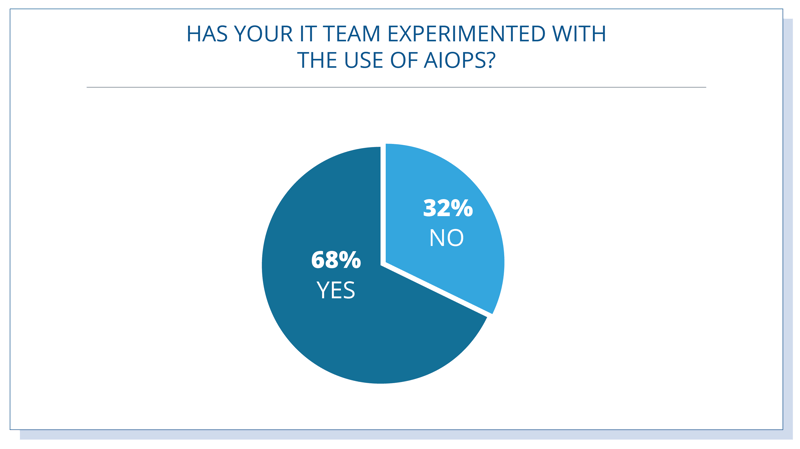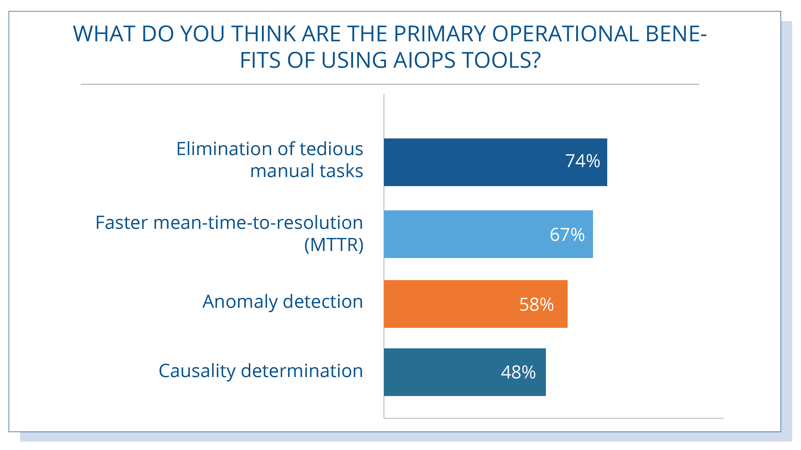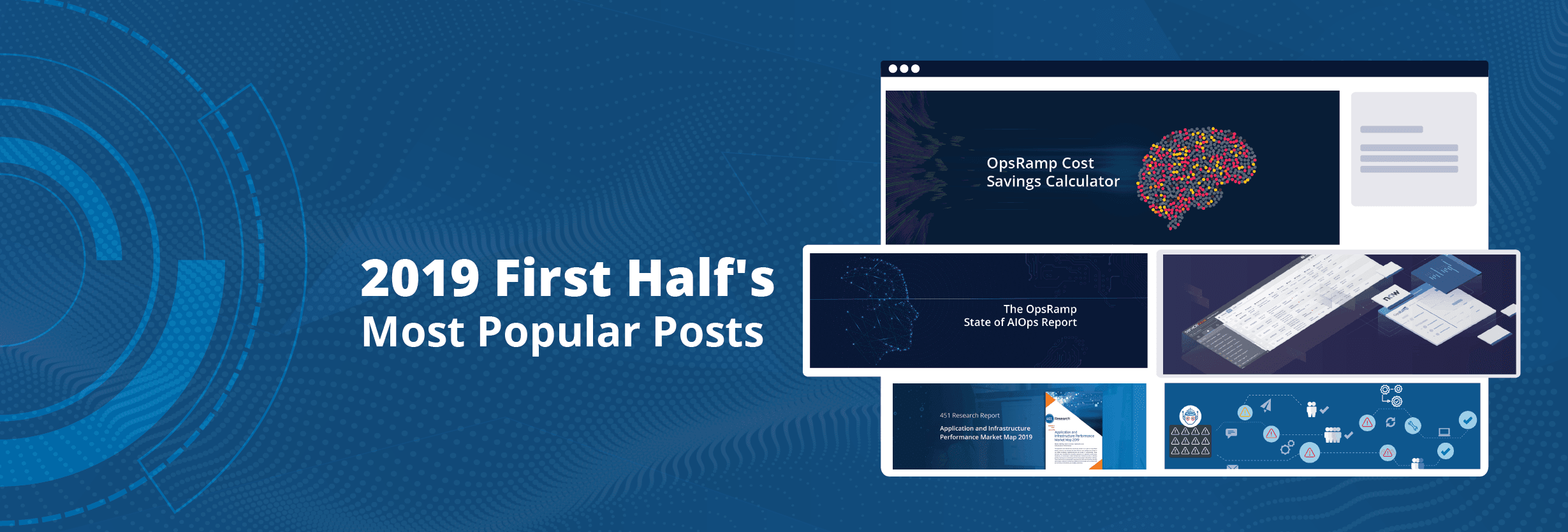“AIOps is gearing up to become the next big thing in IT management...When the power of AI is applied to operations, it will redefine the way infrastructure is managed.”
- Forbes, 5 Ways AIOps Will Influence Enterprise IT Operations
Artificial Intelligence for IT operations (AIOps) is a game-changing technology that’s still in its infancy. As cloud-native services and hybrid infrastructures present new levels of complexity, AIOps has become a critical ingredient for IT operations teams today. The promise of AIOps is tremendous, from machine data analytics to more faster and efficient IT service management.
Embrace A Data-Driven Future With AIOps
Yes, there’s a lot of hype about AI and machine learning. But how are digital operations teams really taking advantage of AIOps? Today OpsRamp released its Top Trends In AIOps Adoption report. We surveyed 120 IT executives at enterprises with 500+ employees to better understand their operational challenges and see how they’re using AIOps tools, including:
- How manageable are modern IT environments?
- How are enterprises experimenting with artificial intelligence and machine learning?
- What AIOps capabilities are they looking for?
- Which AIOps promises are the most compelling?
- What are the barriers to AIOps adoption in their organization?
Here are four insights from the AIOps adoption report that offer an inside look into how enterprises are using issue identification, pattern discovery, and predictive analytics to improve IT-service performance:
#1 - AIOps Is No Longer A Science Project
AIOps adoption is gaining momentum, with enterprises either experimenting or actively using machine learning and data science for hybrid infrastructure management. 68% of IT decision-makers are piloting AIOps to better manage the availability and performance of business-critical IT services.
Bottomline. The usage of advanced analytics and automation for IT management use cases is just getting started. With Gartner projecting an eight-fold increase in AIOps adoption by 2022, control the chaos of incident management and accelerate mean to recovery with AIOps platforms.

#2 - Data Insights and Root Cause Analysis Drive AIOps Usage
Modern IT services combine legacy datacenter and multi-cloud environments with numerous commercial and open source monitoring products for tracking service health and performance. AIOps tools are ingesting, storing and analyzing monitoring data and delivering intelligent insights to fix IT service visibility issues.
Nearly three-quarters are using AIOps capabilities to gain more meaningful insights (73%) from system generated and monitoring-related alerts. Two-thirds of respondents are also applying AIOps to cut through the noise and determine the root cause (68%) of performance issues.
Bottomline. Across the board, respondents resoundingly agreed: AIOps is a chief solution in the battle against data smog. In fact, using AIOps to extract the signal from the noise is one of the primary use cases.

#3 - Avoid Tactical Work and Invent More With AIOps
IT automation can help you break free from reactive and repetitive tasks and focus on strategic and breakthrough initiatives. The two big benefits of AIOps are the ability to automate routine functions (74%) and avoid costly service disruptions with faster recovery (67%). AIOps can also drive better anomaly detection (58%), by predicting shifts in system behavior across dynamic production environments.
Bottomline. As AIOps tools grow in sophistication, expect to save time and money with actionable event context and data-driven recommendations. AIOps will let you focus on high-visibility projects instead of spending all your time on mundane operational tasks.

#4 - Data Quality and Talent Crunch Top Concerns For AIOps Adoption
While AIOps adoption is gaining steam, there are a few apprehensions that could prevent wider adoption. The accuracy of prediction models (54%), quality of large datasets (52%) for machine learning models and the IT talent (48%) needed for building machine learning algorithms are all key constraints for scaling AIOps.
Bottomline. Accuracy, data quality and transparency are the biggest AIOps roadblocks. IT leaders will need to identify emerging AIOps challenges and partner with technology vendors to prioritize the right solutions.

Download the 17-page AIOps report to stay ahead of the AIOps adoption curve.
Next Steps:
- Watch the webinar "Driving Digital Transformation Through Service-Centric AIOps."
- Check out 451 Research’s report on how OpsRamp delivers “end-to-end, holistic IT management platform for heterogeneous environments.”
- Discover the efficiency and scalability of Service-Centric AIOps.
![[Report] Top Trends In AIOps Adoption: Four Findings That Explain How Enterprises Are Using AIOps](https://blog.opsramp.com/hubfs/Blog_images/AIOps%20Adoption%20Report%20/Hero-AIOps-Adoption.jpg)


![[Report] Top Trends In AIOps Adoption](https://blog.opsramp.com/hs-fs/hubfs/Blog_images/AIOps%20Adoption%20Report%20/CTA-AIOps-Adoption.jpg?width=1180&name=CTA-AIOps-Adoption.jpg)


